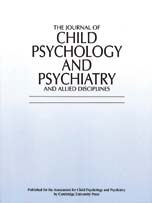Extracting Meaning from Comorbidity: Genetic Analyses That Make Sense
Published online by Cambridge University Press: 03 October 2000
Abstract
As behavioral genetic strategies have become part of the arsenal of research in developmental psychopathology, a wide variety of genetic analyses are being applied to child psychiatric data. Multivariate genetic techniques have been used to explore comorbidity among traits or disorders and the main analysis undertaken has been to examine whether comorbidity is due to shared genetic and/or environmental factors. However, this model ignores other possible causes of comorbidity, which are reviewed. In particular, genetic analyses of comorbidity have only infrequently considered the model of phenotypic causality (one disorder directly influencing another), which provides an important alternative with potentially different implications for intervention strategies. Data from a recently published article by Wamboldt, Schmitz, and Mrazek (1998) are used to illustrate the potential difficulties of distinguishing between models of shared genetic/environmental risk and phenotypic causality. Given that the sample sizes required to distinguish between these models are often large, and frequently greater than those of the datasets available, it is argued that researchers should select the models that they test based on other lines of evidence that these models are plausible. Where convincing evidence does not exist, researchers should explore alternative models and determine their power to discriminate between these models.
- Type
- Brief Report
- Information
- The Journal of Child Psychology and Psychiatry and Allied Disciplines , Volume 41 , Issue 5 , July 2000 , pp. 667 - 674
- Copyright
- © 2000 Association for Child Psychology and Psychiatry
- 17
- Cited by


